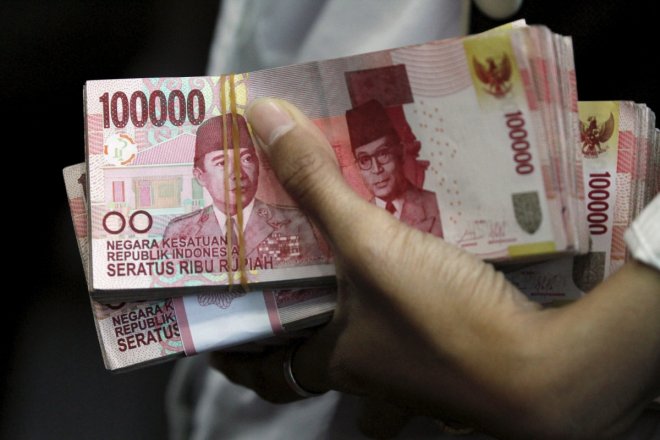
Indonesia's rupiah has been holding a tight range ahead of the crucial GDP data on Monday (Feb 6) and as concerns about the likely changes in the US policy towards the country which is home to the world's largest Muslim community remain.
USD/IDR slipped to 13,335 on Friday from the previous close of 13,398 and the gain in the rupiah was well within the 13,200-13,450 per dollar range it has been keeping since the start of this year.
The Indonesian currency had fallen after Trump's win to the US Presidency in November, pushing the USD/IDR pair to 13,736 from near 13,100. But as of now, the local currency has pared much of those losses.
The Bank Indonesia, the Indonesian central bank, had mentioned US policies as one of the risks to watch for the country in the near future. The International Monetary Fund (IMF) too said about the same risks in its 4 February report on Indonesia.
Although Indonesia was not included in the list of countries upon which the Trump government has recently announced travel restrictions, anti-US sentiments have risen in the South East Asian country
IMF View
The South East Asian economy may have expended 5.07% year-on-year in the fourth quarter as per market expectations, faster than the 5.02% growth recorded in the previous quarter.
The IMF has projected a full year growth rate of 5% for 2016 in a report published on Saturday (4 Feb) and sounded optimistic about the outlook. It sees 5.1% GDP growth in 2017.
"The stronger rupiah and low inflation have caused people's purchasing power to strengthen. This is a major positive boost for the economy as household consumption accounts for more than 55 percent of total economic growth in Southeast Asia's largest economy," the IMF said.
However, the Fund sees inflation accelerating in Indonesia. It expects the CPI year-on-year rate to rise to 4.5% by end of 2017 from 3.02% at end-2016.
The 1 February data showed prices rose 3.49% in January, beating consensus forecast of 3.11% and the December rate of 3.02%.
Bank Indonesia
The central bank at its Jan 19 policy review had left the rates unchanged but noted key external risks as fresh policy indications from the US and China.
"Globally, the risks include the policy directions taken in the US and China and global oil price hike, while the domestic risks are linked to the impact of administered prices (AP) on inflation," the Bank Indonesia said.
The policy rate was kept at 4.75% . The last time it was altered as in October which was a surprise cut by 25 basis points, aimed at boosting growth.
Technical Analysis
The USD/IDR pair is now stuck to a narrow range of 13,350-13,450 and a surprise at the GDP data may help break the same. A downside break could target 13,030 first and then 12,900.
On the higher side, the first level to look out for is 13,570 and then comes the November peak of 13,730.
A break above that will potentially push the pair out of the sideways track since 2016 and bring the upward movement since 2013 back in focus. The pair will then start targeting levels like 14,000 and higher.








